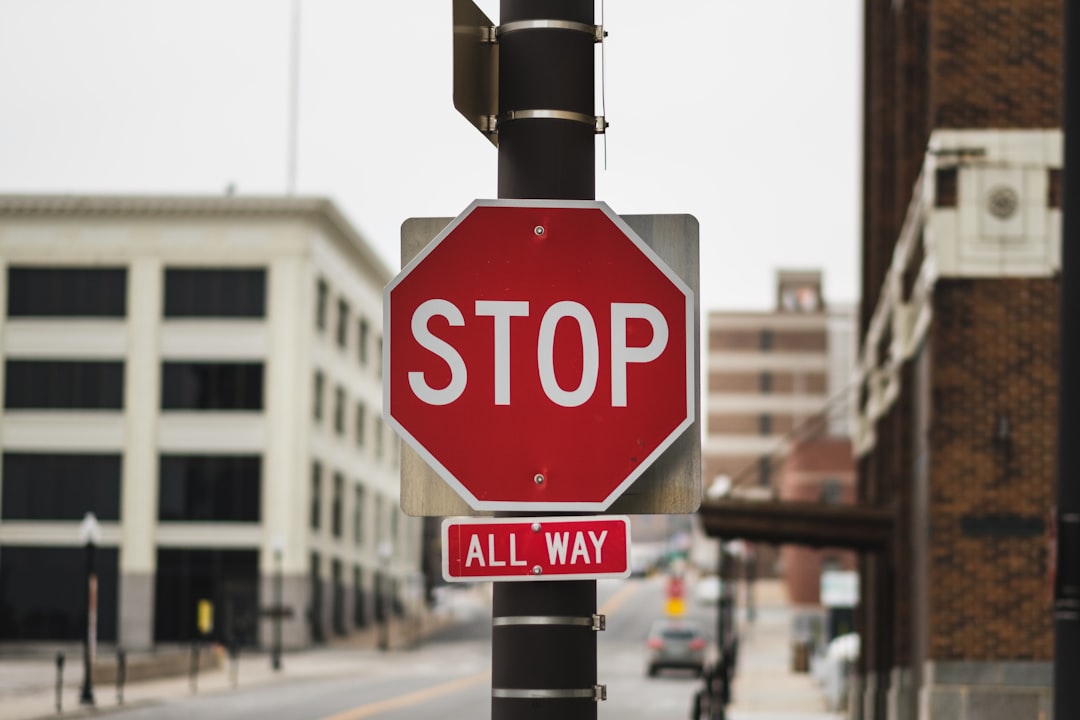Inside this article:

1. Keep your eyes open and be aware of what’s going on around you.
If you’re driving, make sure to keep a safe distance from the vehicle in front of you. If you must pass them, do so at a safe speed.
2. Be patient with yourself. It will take time to get used to the traffic patterns and road conditions.
Traffic is always unpredictable. The best thing to do is be prepared for any eventuality. If you’re driving from home to work, plan ahead and leave early. If you’re driving to the airport, leave at least two hours before your flight. When you arrive at the destination, don’t panic when you realize you’ve missed the exit. Instead, pull off the highway and find a place to park. This way, you’ll avoid getting stuck in traffic.
3. If you are unsure about something, ask someone who knows.
When you’re unsure about something, ask a friend or family member who has experience in the area. They may be able to give you some advice or point you in the right direction.
4. Don’t speed up when approaching an intersection.
When driving at intersections, don’t speed up when approaching them. This is because the driver behind you may be distracted by something else, such as talking on his/her cell phone. If you do speed up, then you might hit someone who is crossing the road.
5. When turning right at a red light, wait until it turns green before proceeding through the intersection.
If you turn right at a red light when the light is still red, you may be fined $50-$100 depending on where you live. This is called “running a red light” and is illegal in all 50 states. However, if you wait for the light to change, then proceed through the intersection, you won’t be ticketed.
6. When making a left-hand turn from a one-way street, give way to vehicles already in the intersection.
If you want to avoid accidents, then you should always give way to other drivers who are turning right at intersections. This is especially important when driving through a roundabout.
7. Remember that pedestrians always have the right of way.
Pedestrians always have the right of the road, which means they should be given priority when crossing streets. This includes walking across intersections, making turns at red lights, and driving through crosswalks. If someone is in the middle of the street, drivers must yield to them until they reach the other side.
8. Always use hand signals when changing lanes.
When driving, always use hand signals when changing lane. This way, other drivers know what you’re doing and can adjust accordingly. If you don’t signal, they may think you’re trying to cut them off or something else bad.
9. Never assume that other drivers know where they are going or how to drive safely.
When driving at night, never assume that other drivers know what they’re doing. They may be distracted, tired, drunk, or just plain careless. If you don’t want to end up like one of these unfortunate drivers, always keep your eyes open for hazards, slow down when approaching intersections, and use extra caution around construction zones.
10. Slow down for school buses and children walking along streets.
The slow speed limit for school buses and pedestrians was introduced in order to reduce traffic accidents. However, the law has been controversial because some parents feel that they should be able to drive faster when their kids are out walking.
Bad weather
Driving during bad weather conditions such as rain, snow, fog, or heavy winds is dangerous for all drivers. The best way to avoid accidents is to slow down and drive carefully. If you must drive at night, use headlights and turn on your windshield wipers. Also, be careful when driving through intersections where other vehicles may be turning.
Driving Ability
Driving ability is important for everyone, especially when they drive at night. If you want to be safe while driving, then you should learn how to drive safely. The best way to do this is to practice driving in different conditions.
Influence of alcohol
Alcohol has been proven to impair judgment and reaction times. This means that when you drink alcohol, you may be less able to react quickly to dangerous situations. Driving while intoxicated is illegal in all 50 states, and it is important to know the laws regarding drinking and driving. If you plan to drive after having had too much to drink, call a cab instead of getting behind the wheel yourself.
Nighttime driving
Driving at night is dangerous because drivers often do not notice other vehicles, pedestrians, animals, or road hazards. The best way to avoid accidents is to use headlights, turn signals, and brake lights. If you are involved in an accident, stay calm and call 911 immediately.
Inclement weather
The best way to drive safely during inclement weather is to keep up with the latest road conditions. If you are stuck in traffic, try to find out why. If you are traveling at night, use extra caution when approaching intersections. Also, be aware of pedestrians who may be walking in the middle of the road.
1. Winter
Winter can be a dangerous time for drivers due to the fact that they are less likely to have their headlights on while driving at night. This makes them more susceptible to accidents caused by other vehicles. In addition, snowfall can cause visibility issues and make it difficult to judge distances between cars.
2. Ice
Ice is a common problem for drivers this time of year. When roads become slick from ice, drivers may lose control of their vehicle. If you find yourself in a situation where your car has slid off the road, it is best to stay put until help arrives.
3. Fog
Fog is a common occurrence this time of year. Drivers should slow down when approaching intersections or curves, especially if visibility is low. They should also use caution when turning left or right since fog can obscure vision.
4. Snow
Snowfall can be hazardous to drivers. It can make roads slippery and decrease visibility. Be sure to slow down when driving through areas covered in snow and use caution when changing lanes.
5. Rain
Rain can be a major issue for drivers. Slippery roads can lead to accidents. Make sure you always check the weather before leaving home.
6. Windy Conditions
Windy conditions can pose a serious threat to drivers. Strong wind gusts can blow objects into the path of moving vehicles. Be careful when driving near trees or power lines.
7. Blackout
Blackouts occur when there is no light pollution. These days, most people rely on their cell phones as a source of light. However, these devices only work well under certain circumstances. For example, they will not provide enough illumination to see clearly in poor lighting conditions such as those created by heavy rain or snowfall.
FAQ
– Where should I park when I go out?
If you want to avoid traffic jams, parking near a train station or bus stop is best. Parking at a mall or shopping center may be easier, but you’ll likely have to walk longer distances to reach your destination. If you don’t mind walking, parking at a gas station or grocery store is also a good option.
– How often should I change my oil?
Changing your oil is important because it helps prevent engine damage. The best way to check your oil level is to use a dipstick. If you don’t know how to do this, ask someone at your local auto parts store.
– How often do I have to check my tire pressure?
Every two hours while driving, at least once per week when parked, and whenever you notice any change in air pressure. The best way to check your tire pressure is to use a tire gauge.
– When should I replace my brake pads?
If you notice any unusual noises when braking, then you need to change your brake pads. Brake pads wear out after about 50,000 miles. The best way to check for worn brake pads is to look at them while driving down the road. If they feel loose or squishy, then you need to replace them.
– What should I know before getting behind the wheel?
Before driving, you need to understand how to drive safely. This includes knowing what the rules are for driving in your state, obeying traffic laws, and understanding the road signs. Also, don’t forget to wear your seatbelt!
– What should be on my car insurance policy?
Your car insurance policy should include coverage for damage caused by vandalism, theft, fire, collision, and other perils. The minimum amount of liability coverage is $100,000 per person and $300,000 per accident. If you want additional coverage, such as uninsured motorist and medical payments, you may need to purchase these add-ons.
– What should my first car be?
Your first car should be a used car, which means you can save money when buying a new car. If you want to buy a new car, then look for a model that has been around for at least three years. This way, you know that the car will last longer and you won’t have to spend too much money fixing it up.
– What should we look for when buying a used car?
When buying a used car, you need to be careful about what you are looking for. The first thing you want to do is check out the engine oil level. If it is too high, then you may need to change the oil. Next, you want to check the tires. Make sure they are inflated properly. Also, check the brakes and steering wheel. Finally, check the lights and turn signals.
– What are some common car accidents and how can they be avoided?
Car accidents are one of the leading causes of death for teenagers. The National Highway Traffic Safety Administration estimates that each year, about 1.3 million teens between the ages of 16 and 19 are injured in motor vehicle crashes. Teenagers who drive cars are at greater risk of dying in a crash than those who do not. The most common types of car accidents include rear-end collisions, head-on collisions, and rollovers.
– What are some things that make driving safer?
Driving safely means using common sense when driving. Here are some tips for driving safely:
1) Avoid distractions such as talking on the phone, texting, eating, drinking, etc.
2) Be aware of other drivers around you.
3) Slow down when approaching intersections and stop signs.
4) Drive at safe speeds.
5) Use turn signals.
6) Don’t drink alcohol while driving.
7) Keep your car clean.
8) Stay alert and be prepared for unexpected situations.
9) Wear seatbelts.
10) Never drive under the influence of drugs or alcohol.
– What are common mistakes people make when driving?
The first mistake people make when driving is they don’t slow down for stop signs. Second, they drive too fast through intersections. Third, they speed up when they’re going downhill. Fourth, they drive at night. Fifth, they drive while talking on the phone. Sixth, they drive while texting. Seventh, they drive after drinking alcohol. Eighth, they drive when tired. Ninth, they drive when sleepy. Tenth, they drive when distracted. Eleventh, they drive when angry.
– What are safe habits to develop as a driver?
Safe driving habits include having a well-maintained vehicle, wearing seatbelts, and obeying traffic laws. If you follow these rules, then you should be able to avoid accidents. However, if you do cause an accident, you may face fines, insurance costs, and other penalties.
– What are good ways to avoid road rage?
Avoid road rage by driving safely and obeying traffic laws. Don’t tailgate, don’t speed, and don’t drive aggressively. If someone cuts you off, let them go first. Also, be patient when waiting at a light or stop sign.






